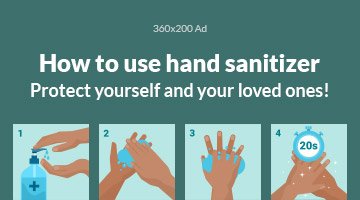A hickey, also known as a love bite or kiss mark, is a common occurrence in romantic relationships. But have you ever wondered how long does a hickey last? In this article, we’ll explore the science behind hickeys, the factors that influence their duration, and tips to help them heal faster. By the end, you’ll have a complete understanding of this intriguing skin phenomenon.
What Is a Hickey?
A hickey is a bruise that forms when intense suction or biting breaks small blood vessels beneath the skin. These broken blood vessels, known as capillaries, release blood into the surrounding tissue, creating a visible mark. Initially, a hickey appears red due to the oxygenated blood, but over time, it may turn purple, blue, green, or yellow as the bruise heals.
Hickeys are most commonly found on the neck, shoulders, or other areas where the skin is sensitive and prone to bruising. While they’re harmless, they can be a source of embarrassment or discomfort, especially if they’re visible.

How Long Does a Hickey Last?
On average, a hickey lasts between 5 to 12 days, depending on several factors. Here’s a breakdown of the healing stages:
- Day 1-2: The hickey appears red or pink as blood pools under the skin.
- Day 3-5: The hickey may darken to purple or blue as the blood loses oxygen.
- Day 6-9: The color starts to change to green or yellow as the body metabolizes the blood.
- Day 10-12: The hickey fades and eventually disappears as the skin heals completely.
It’s important to note that everyone’s body is different so that the duration can vary based on individual healing processes and other factors.
Factors How Long Does a Hickey Last
Several factors can affect how long does a hickey last, including:
- Skin Sensitivity
People with sensitive or fair skin are more likely to develop prominent hickeys that take longer to heal. Thin skin also bruises more easily, which can extend the duration of a hickey.
- Location of the Hickey
Hickeys on areas with thinner skin and more blood vessels, like the neck, tend to be more noticeable and take longer to heal than those on thicker-skinned areas.
- Age
Younger individuals often heal faster due to better blood circulation and higher collagen levels. As we age, the skin’s ability to repair itself slows down, potentially prolonging the healing process.
- Overall Health
Your overall health plays a significant role in how quickly your body can heal. A healthy diet, regular exercise, and good hydration can speed up the healing process, while poor health habits can slow it down.
- Treatment
How long does a hickey last impact its duration. Proper care can help reduce its visibility and promote faster healing.
How to Make a Hickey Heal Faster
If you’re wondering how to speed up the healing process, here are some effective tips:
- Apply a Cold Compress
Use a cold pack or a spoon chilled in the freezer and press it against the hickey for 10-20 minutes. This will reduce swelling and prevent the bruise from spreading.
- Massage the Area
Gently massaging the hickey can stimulate blood flow and help break up the clotted blood. Be careful not to apply too much pressure, as this could worsen the bruise.
- Use Heat Therapy
After the first 48 hours, apply a warm compress to the hickey. Heat helps dilate blood vessels, promoting circulation and speeding up the healing process.
- Try Over-the-Counter Remedies
Topical creams and gels containing vitamin K, arnica, or aloe vera can help reduce bruising and inflammation. Apply them as directed for best results.
- Stay Hydrated and Eat Healthily
Drinking plenty of water and consuming foods rich in vitamins C and K can support skin healing. Citrus fruits, leafy greens, and berries are excellent choices.
- Conceal the Hickey
If you’re looking for a quick fix, you can use makeup to hide the hickey. A green-tinted concealer neutralizes the red tones, and the foundation can help blend it with your skin tone.
Common Myths About Hickeys
Myths and misconceptions surround hickeys. Let’s debunk some of the most common ones:
Myth 1: Hickeys Are Permanent
Hickeys are temporary and will fade with time. While rare, if the bruise is particularly severe, it may leave a faint mark for an extended period, but this is uncommon.
Myth 2: Toothpaste Can Heal a Hickey
While some people swear by applying toothpaste to a hickey, there is no scientific evidence to support this remedy. In fact, the ingredients in toothpaste may irritate your skin.
Myth 3: Hickeys Are Dangerous
For the vast majority of people, hickeys are harmless. However, in extremely rare cases, they have been linked to blood clots or other complications. If you experience unusual symptoms, consult a doctor.
How to Prevent a Hickey
If you’d prefer to avoid hickeys altogether, here are some tips:
- Communicate with Your Partner: Discuss boundaries and preferences to avoid unintentional hickeys.
- Adjust Pressure: Gentle kissing or touching can prevent the formation of a hickey.
- Use Barriers: Wearing a scarf or turtleneck can provide an extra layer of protection for sensitive areas.
When to See a Doctor
While hickeys are typically harmless, there are rare instances where medical attention may be necessary. Seek a doctor’s advice if:
- The hickey is unusually large or painful.
- You notice signs of infection, such as redness, swelling, or pus.
- You experience difficulty breathing or other symptoms unrelated to the hickey.
Final Thoughts
So, how long does a hickey last? The answer depends on several factors, including your skin type, overall health, and how you care for it. By following the tips outlined in this article, you can minimize its appearance and help it heal faster.
Remember, hickeys are a natural part of intimacy for many people and are nothing to be ashamed of. Whether you choose to embrace them or conceal them, the most important thing is to prioritize communication and consent in your relationships.
For more tips on skincare and health, be sure to check out our other articles!
You may also read: Mass Market Paperback vs Paperback: Understanding the Key Differences



